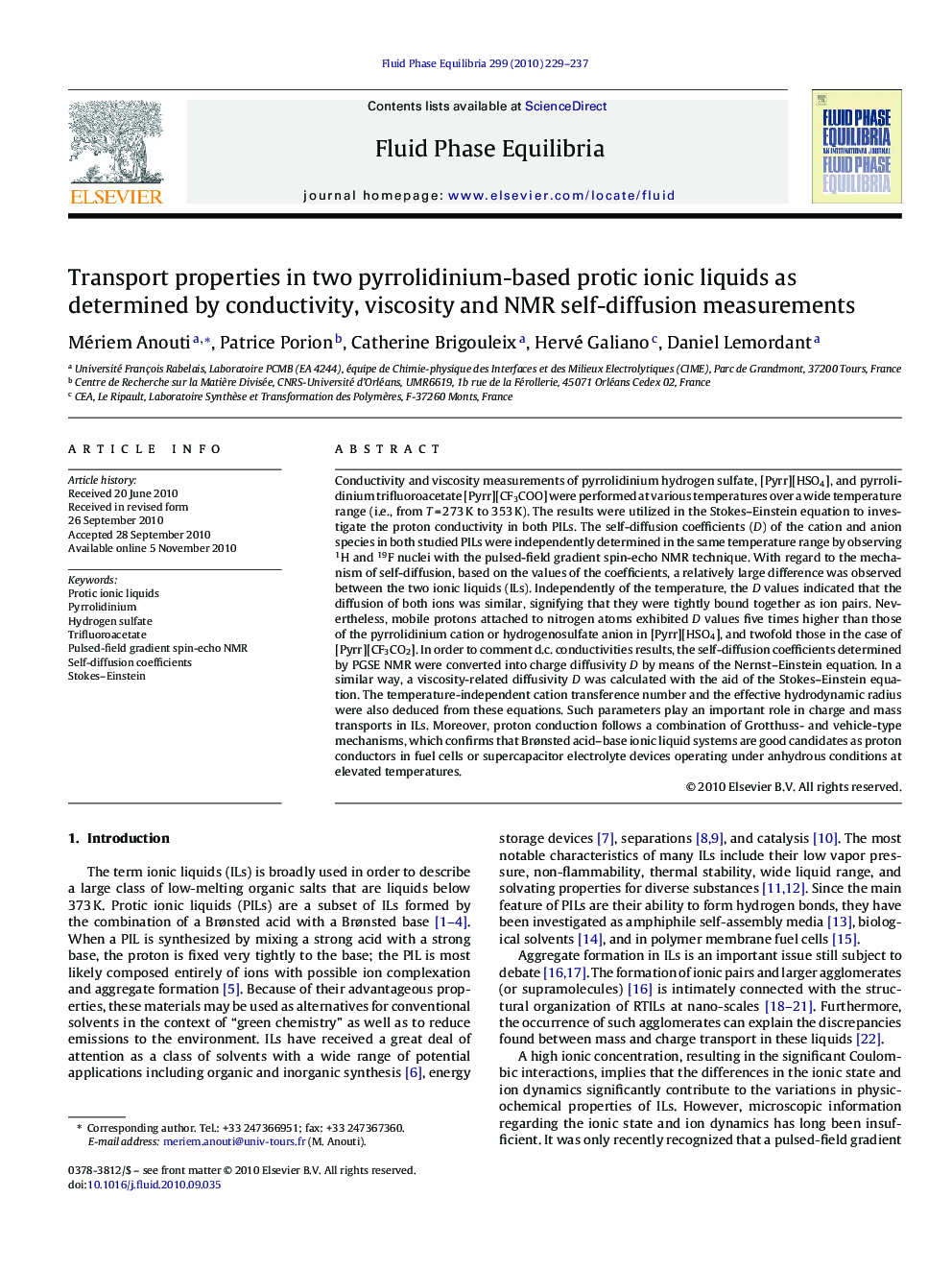| کد مقاله | کد نشریه | سال انتشار | مقاله انگلیسی | نسخه تمام متن |
|---|---|---|---|---|
| 202779 | 460621 | 2010 | 9 صفحه PDF | دانلود رایگان |

Conductivity and viscosity measurements of pyrrolidinium hydrogen sulfate, [Pyrr][HSO4], and pyrrolidinium trifluoroacetate [Pyrr][CF3COO] were performed at various temperatures over a wide temperature range (i.e., from T = 273 K to 353 K). The results were utilized in the Stokes–Einstein equation to investigate the proton conductivity in both PILs. The self-diffusion coefficients (D) of the cation and anion species in both studied PILs were independently determined in the same temperature range by observing 1H and 19F nuclei with the pulsed-field gradient spin-echo NMR technique. With regard to the mechanism of self-diffusion, based on the values of the coefficients, a relatively large difference was observed between the two ionic liquids (ILs). Independently of the temperature, the D values indicated that the diffusion of both ions was similar, signifying that they were tightly bound together as ion pairs. Nevertheless, mobile protons attached to nitrogen atoms exhibited D values five times higher than those of the pyrrolidinium cation or hydrogenosulfate anion in [Pyrr][HSO4], and twofold those in the case of [Pyrr][CF3CO2]. In order to comment d.c. conductivities results, the self-diffusion coefficients determined by PGSE NMR were converted into charge diffusivity D by means of the Nernst–Einstein equation. In a similar way, a viscosity-related diffusivity D was calculated with the aid of the Stokes–Einstein equation. The temperature-independent cation transference number and the effective hydrodynamic radius were also deduced from these equations. Such parameters play an important role in charge and mass transports in ILs. Moreover, proton conduction follows a combination of Grotthuss- and vehicle-type mechanisms, which confirms that Brønsted acid–base ionic liquid systems are good candidates as proton conductors in fuel cells or supercapacitor electrolyte devices operating under anhydrous conditions at elevated temperatures.
Journal: Fluid Phase Equilibria - Volume 299, Issue 2, 25 December 2010, Pages 229–237